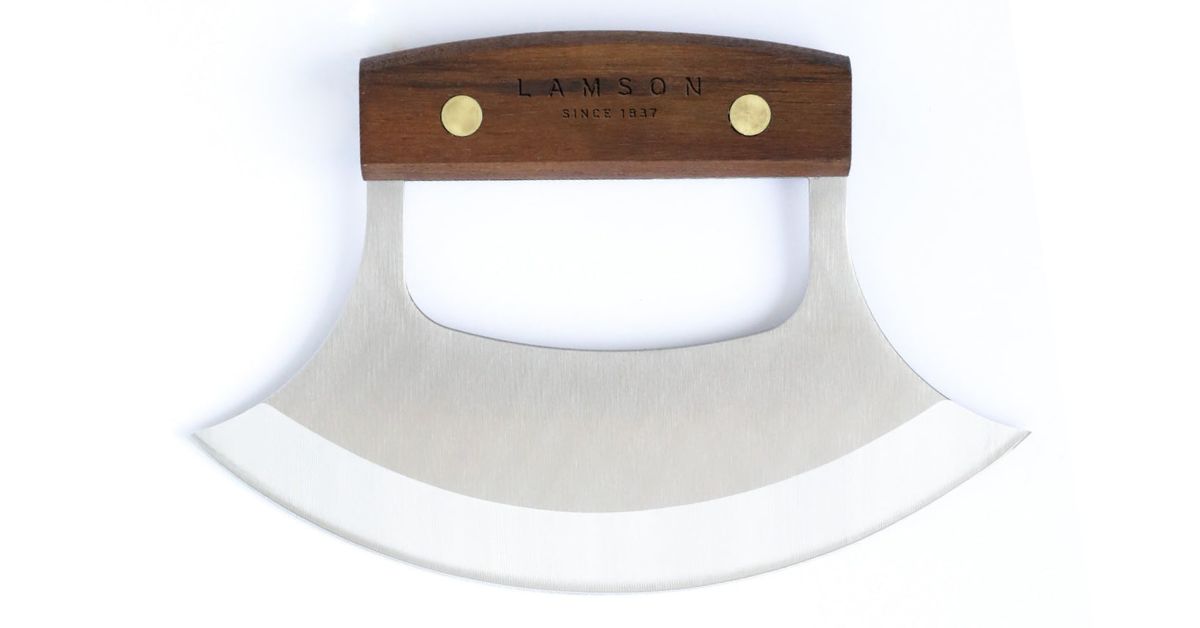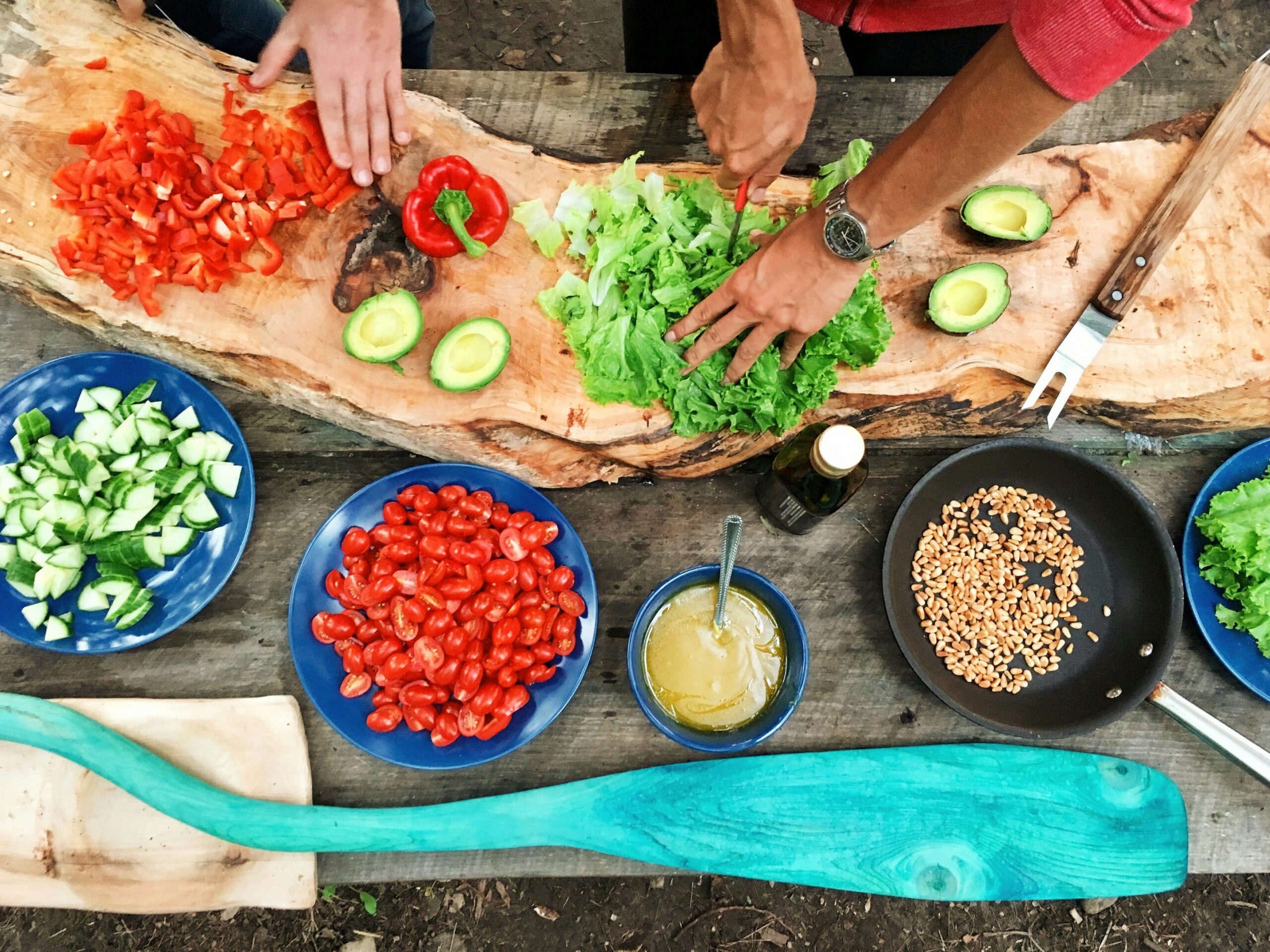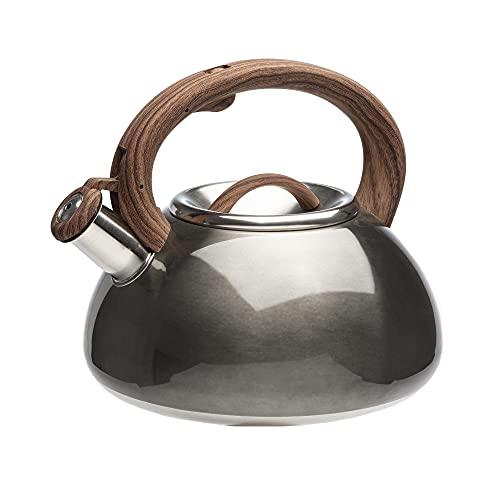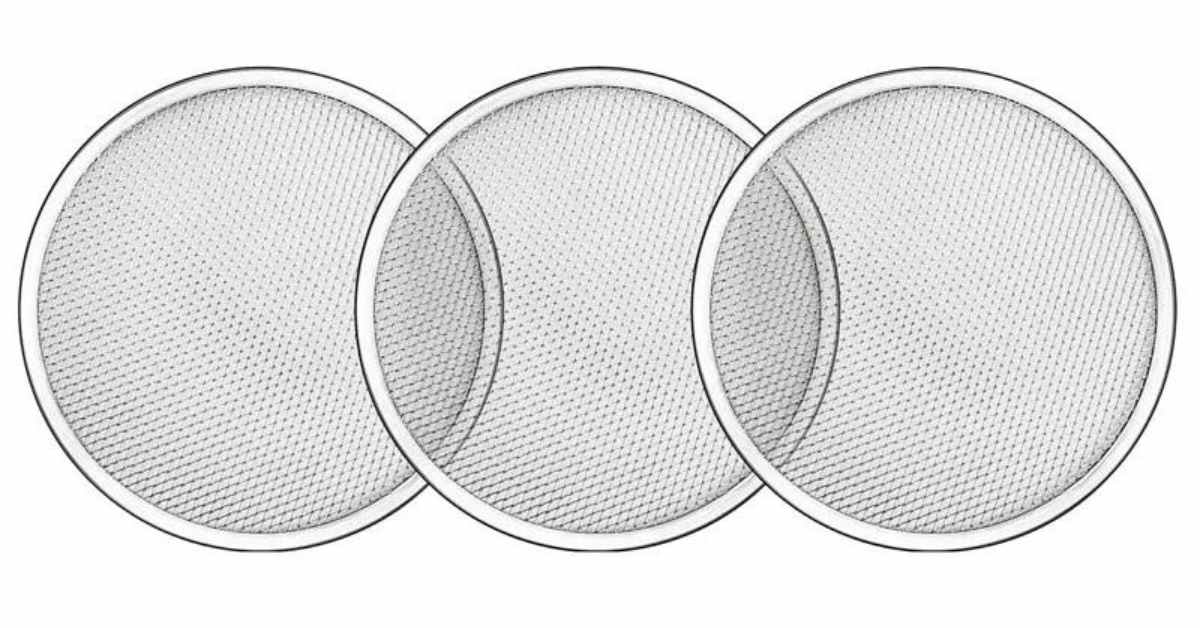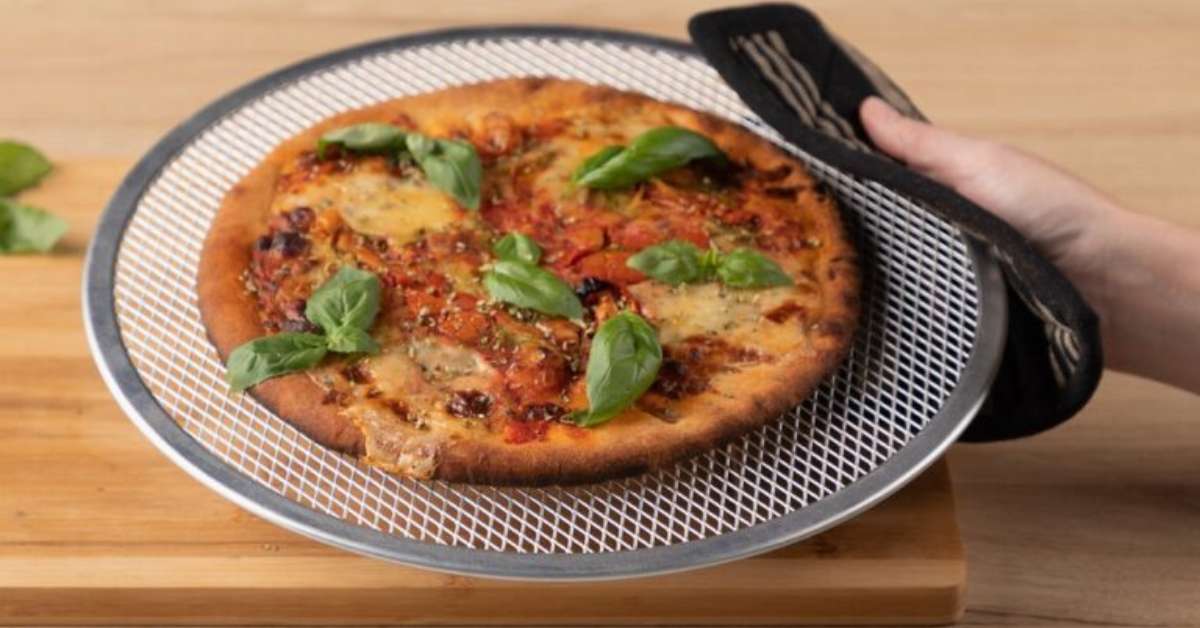Are you tired of struggling with dull knives that make your kitchen tasks a chore? Look no further! This article introduces you to the ultimate kitchen tool that will revolutionize your cooking experience – the round bladed knife. This innovative and versatile knife is a must-have for any aspiring chef or cooking enthusiast.
With its unique design and cutting-edge technology, the round bladed knife offers unparalleled precision, efficiency, and safety. Say goodbye to tedious slicing and chopping, and say hello to a new level of culinary excellence. Let’s dive into the world of the round bladed knife and discover why it deserves a prominent place in your kitchen in 2023.
Table of Contents
ToggleWhat is a Round Bladed Knife
A round-bladed, circular, or wheel knife is a unique kitchen tool that stands out from traditional straight-edged knives. Unlike conventional knives with a pointed tip and a straight cutting edge, the round bladed knife features a circular blade that rotates on its axis. This distinctive design offers several advantages regarding slicing and dicing ingredients.
The blade of a round bladed knife is typically sharp on both sides, allowing for versatile cutting techniques. It effortlessly glides through various food items- fruits, vegetables, or meat. The circular shape of the blade provides stability and control, making it easier to maintain a consistent cutting angle.
One of the key benefits of a round bladed knife is its efficiency in cutting through round or curved objects. The rounded blade allows smooth and precise cutting motions, ideal for trimming the tops off strawberries or removing the cores from apples. It eliminates the need for multiple angled cuts and reduces the risk of accidents caused by slipping.
In addition to its practicality, a round bladed knife offers enhanced safety features. The absence of a pointed tip reduces the likelihood of accidental punctures, making it a safer option, especially for beginners in the kitchen. The rounded blade also minimizes the chances of the knife getting stuck in the food, preventing potential injuries.
Anatomy of a Round Bladed Knife
To truly appreciate the functionality and benefits of a round bladed knife, it’s essential to understand its anatomy. Let’s take a closer look at the key components that make up this innovative kitchen tool:
Round Blade: The most distinctive feature of a round bladed knife is its circular blade. This blade is curved along its edge, allowing for a smooth rocking motion during cutting. The rounded shape enhances precision and control, making tasks like chopping, slicing, and mincing easier.
Handle: The designers have developed the handle of the round bladed knife with ergonomic considerations in mind. It provides a comfortable and secure grip, allowing for extended periods of use without causing hand fatigue. The handle can be made of wood, plastic, or metal, providing durability and stability.
Bolster: The bolster is the thick junction between the blade and the handle. It serves multiple purposes, including providing balance and stability to the knife and protecting the hand from accidental slippage onto the edge. Some round-bladed knives may have a full bolster that extends the entire length of the handle, while others may have a partial bolster.
Tang: The tang refers to the portion of the blade that extends into the handle. A full tang extends the entire length of the handle, providing extra strength and stability. This design ensures that the blade and handle are securely connected, resulting in a more durable and reliable knife.
Edge: Typically, manufacturers sharpen the edge of a round bladed knife to precision. It allows for precise cutting, slicing, and dicing. The cutter may be honed to different sharpness levels, depending on the specific culinary tasks it is intended for.
What Are Round Knives Used for
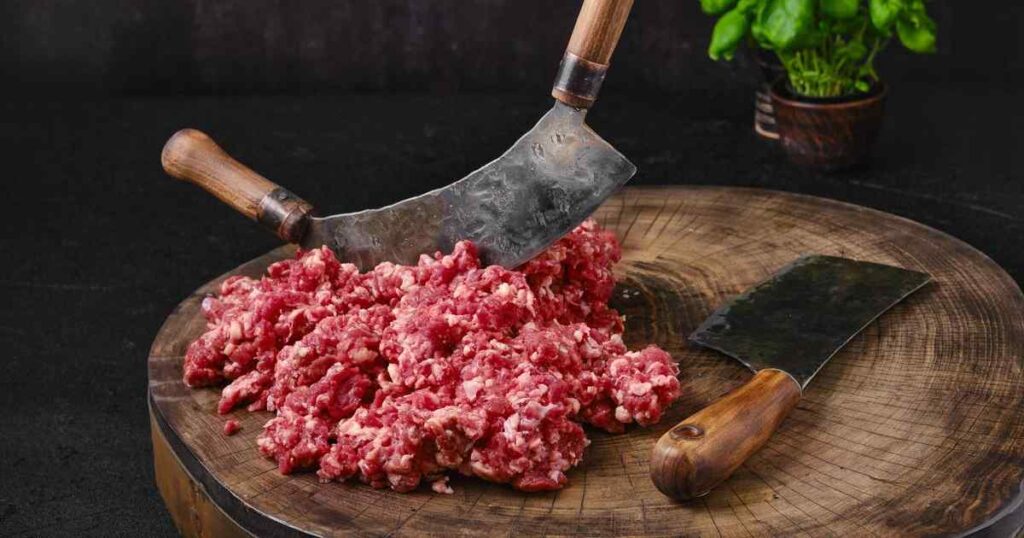
With their distinctive circular blades, round knives serve various purposes in the kitchen. Their unique design and features make them suitable for precision and efficiency tasks. Here are some common uses of rounded blades:
Chopping and Mincing
The round blade allows for a rocking motion while cutting, making it ideal for chopping and mincing ingredients like herbs, garlic, and onions. The curved edge facilitates smooth and consistent cuts, saving time and effort.
Slicing and Carving
Round knives excel at slicing through meats, such as roasts and steaks. The circular blade ensures even and precise cuts, making it easier to achieve thin slices or carve meats with finesse.
Dough Handling
The round blade is also valuable for working with dough. Whether you’re making pastries, bread, or pizza, the round knife’s rocking motion helps to cut, shape, and portion dough with precision, ensuring consistent results.
Garnishing and Decorating
People often use round knives for intricate garnishing and decorating tasks. Their
Nimble maneuverability allows them to create precise shapes, patterns, and designs on fruits, vegetables, and desserts.
General kitchen Tasks
Besides their specialized uses, round knives are versatile tools for everyday kitchen tasks. They can handle tasks like spreading butter, scraping ingredients off cutting boards, and even cracking nuts.
Types of Round Bladed Knives
Round-bladed knives come in various types, each designed for specific culinary tasks. Let’s explore some of the common types of round-bladed knives and their purposes:
Santoku Knife:
The Santoku knife originates from Japan and is often called the “three virtues” knife. It features a round blade with a shorter length and a flat cutting edge. The Santoku knife excels in slicing, dicing, and chopping vegetables, making it a versatile tool for everyday cooking.
Mezzaluna Knife:
The mezzaluna knife, called a crescent knife, features a half-moon-shaped blade with two handles. This design allows for a rocking motion while chopping herbs, vegetables, or pizza. The mezzaluna knife is ideal for finely mincing ingredients and achieving consistent cuts.
Chinese Cleaver:
The Chinese cleaver, or “vegetable knife,” has a broad, rectangular blade with a round tip. It combines the functionality of a knife and a cleaver, making it suitable for a wide range of tasks. The Chinese cleaver is excellent for precisely slicing, dicing, and chopping meat, poultry, and vegetables.
Tomato Knife:
The tomato knife features a serrated round blade explicitly designed for slicing through delicate tomato skins without crushing the fruit. Its sharp, jagged edge ensures clean and effortless cuts, making it a handy tool for preparing tomatoes and other soft fruits.
Cheese Knife:
A cheese knife with a round blade is ideal for slicing through various cheese slices. Its rounded shape and sharp edge allow smooth cuts, preventing the cheese from sticking to the sword. Whether serving a cheese platter or preparing a grilled cheese sandwich, a round-bladed cheese knife is a must-have.
Pastry Knife:
A round-bladed pastry knife, often called a “baker’s blade” or “dough scraper,” is designed for working with dough. Its rounded edge allows easy dough cutting, shaping, and portioning for pastries, bread, and other baked goods.
By understanding the different types of round-bladed knives and their specific uses, you can choose the right tool for your culinary needs. Whether you’re a professional chef or a home cook, having a selection of round-bladed knives in your kitchen can elevate your cooking experience and bring precision to your food preparation.
When Buying a Round Bladed Knife, Consider These Factors
When you’re in the market for a round bladed knife, you must consider several factors to ensure you choose the right one for your needs. Here are some key factors to keep in mind:
Blade Material: The material of the blade determines its durability and sharpness retention. Look for high-quality stainless steel or carbon steel blades with excellent performance and longevity.
Handle Comfort: Since the handle is where you’ll be gripping the knife, it’s essential to consider comfort and ergonomics. Look for a handle that fits comfortably in your hand and provides a secure grip, reducing the risk of accidents or fatigue during prolonged use.
Blade Size and Shape: Consider the size and shape of the blade based on your specific cooking tasks. A larger blade may be suitable for slicing meats and more giant vegetables, while a smaller blade may be ideal for precision tasks like mincing herbs or peeling fruits.
Blade Edge: Determine whether you prefer a straight edge or a serrated edge based on the type of ingredients you frequently work with. Straight edges offer clean cuts, while jagged edges excel at slicing through soft or delicate foods.
Maintenance and Sharpening: Consider the knife’s ease of maintenance and sharpening. Look for blades that are easy to clean, and consider whether you’re comfortable sharpening the blade yourself or prefer a knife that can be quickly taken to a professional for pointing.
Budget: Set a budget range for your knife purchase. While high-quality knives often come with a higher price tag, they are a worthwhile investment in the long run. However, affordable options are also available that provide exemplary performance and durability.
Brand Reputation: Research the brand’s reputation and read customer reviews to ensure you purchase from a reputable manufacturer known for producing high-quality knives.
Considering these factors, you can make an informed decision when buying a round bladed knife. Remember, the right blade can significantly enhance your culinary experience and make your kitchen tasks more efficient and enjoyable.
How to Care for Your Round Bladed Knife
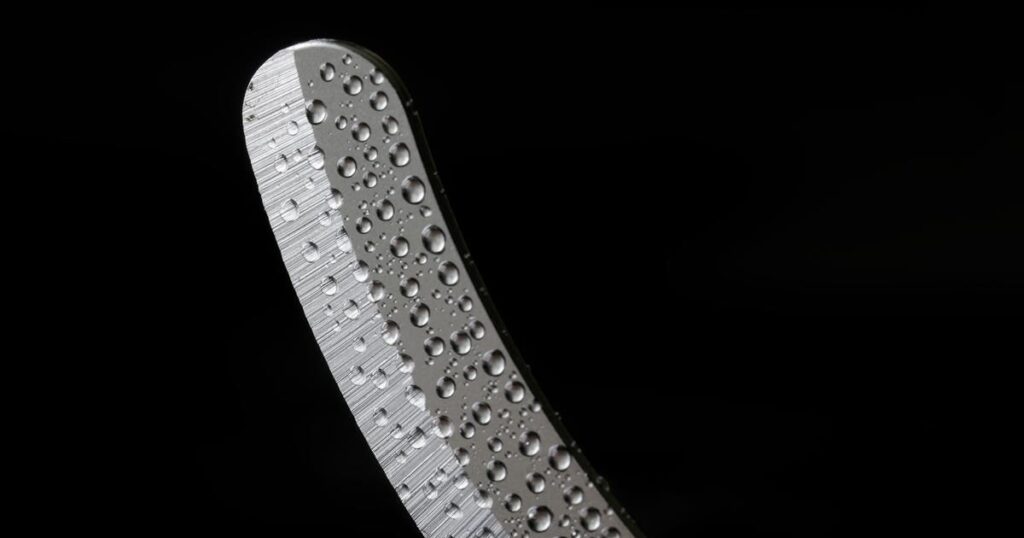
Proper care and maintenance are essential to keep your round bladed knife performing at its best and ensure longevity. Here are some critical tips to help you care for your knife:
Hand Washing: Always hand washes your round bladed knife with mild dish soap and warm water immediately after use. Avoid soaking it for prolonged periods, as this can damage the handle and blade. Rinse thoroughly and dry it immediately with a clean towel to prevent moisture buildup.
Avoid the Dishwasher: Dishwashers can subject knives to harsh conditions that can dull the blade and damage the handle. Washing your round bladed knife by hand is best to maintain its sharpness and overall quality.
Use a Cutting Board: Always use a cutting board when using your knife. Avoid cutting on hard surfaces like countertops or plates, as this can damage the blade’s edge. Opt for wood, bamboo, or plastic cutting boards to protect the knife and your countertops.
Avoid Excessive Force: While round-bladed knives are durable, excessive force can still damage the blade. Avoid using your knife to pry open cans, bones, or other complex objects. Use a separate tool designed for these tasks to prevent unnecessary stress on the blade.
Sharpen Regularly: Keep your round bladed knife sharp by regularly honing and sharpening the blade. You can use a sharpening stone or a honing rod to maintain the knife’s edge. Follow the manufacturer’s instructions or seek professional sharpening if you need clarification.
Store Properly: Store your round bladed knife in a knife block, magnetic strip, or sheath to protect the blade and prevent accidental cuts. Avoid storing it loosely in a drawer, as it can cause damage to both the knife and other utensils.
Handle with Care: Handle your knife carefully to avoid accidental injuries and damage. Always hold the knife by the handle and be mindful of where you place it to prevent it from falling or getting knocked off the countertop.
How to Use Your Round Bladed Knife
Using a round bladed knife requires a slightly different technique than traditional knives. Here are some tips on how to effectively and safely operate your round-bladed cutter:
Grip the knife Properly: Hold the knife’s handle firmly and comfortably. Ensure your fingers are securely wrapped around the handle, providing stability and control.
Master the Rocking Motion: The unique design of the round blade allows for a rocking motion while cutting. Rest the tip of the edge on the cutting board and use a gentle rocking motion from the handle to the end to slice through ingredients smoothly and efficiently. Practice this motion to achieve consistent and precise cuts.
Utilize the Curve: Take advantage of the curved edge of the round bladed knife. Use the curve to your advantage when chopping or mincing herbs, vegetables, or other ingredients. Rock the blade back and forth to create a fluid cutting motion.
Use the Tip for Delicate Work: The round blade tip is handy for delicate tasks. Use it to peel fruits or trim excess fat from meats. The fine point allows for detailed and controlled cuts.
Mindful Cutting Techniques: Be cautious when using your round bladed knife. Always cut away from your body and keep your fingers curled under to prevent accidental cuts. Pay attention to your hand placement and the direction of the blade to ensure safety while cutting.
Sharpen Regularly: Keep your round bladed knife sharp for optimal performance. Regularly sharpen the blade using a sharpening stone or a honing rod. A sharp knife not only makes cutting easier but also promotes safer handling.
Clean After Each Use: Clean your round bladed knife promptly with mild soap and warm water. Dry it thoroughly to prevent moisture buildup and potential rusting.
Following these guidelines, you can master using your round bladed knife effectively. With practice and proper handling, you’ll experience the precision and efficiency that this innovative kitchen tool offers, elevating your culinary skills and enjoyment in the kitchen.
Benefits of Using a Round Bladed Knife
Using a round bladed knife in your kitchen has many benefits that can enhance your cooking experience. Here are some key advantages of incorporating a round bladed knife into your culinary repertoire:
Versatility
Round-bladed knives are versatile tools that can handle various culinary tasks. They excel in cutting techniques, from slicing and dicing vegetables to mincing herbs and carving meats. The curved edge allows for precise and controlled cuts, making them suitable for delicate and robust ingredients.
Effortless Rocking Motion
The round blade design enables a natural rocking motion while cutting. This motion reduces strain on your wrist and makes it easier to achieve consistent cuts. The rocking movement is especially beneficial when chopping herbs, allowing you to swiftly and evenly mince them.
Enhanced Safety
The rounded shape of the blade reduces the risk of accidental cuts. Compared to traditional pointed edges, round blades are less likely to cause injuries when handling or reaching into drawers. The reduced risk of slips and cuts enhances overall kitchen safety.
Increased Efficiency
The rocking motion and precision of a round bladed knife contribute to increased efficiency in the kitchen. It allows you to cut through ingredients quickly and effortlessly, saving time and energy during food preparation. The curved edge also minimizes the need for repetitive chopping, further streamlining your cooking process.
Consistent Slicing
Round-bladed knives excel at achieving consistent and even slices. Whether you’re slicing meats, fruits, or vegetables, the circular blade ensures uniform thickness throughout, resulting in aesthetically pleasing presentations and even cooking.
Culinary Artistry
The versatility and precision of round-bladed knives empower you to create culinary works of art. From intricate garnishes to elegantly carved roasts, these knives enable you to showcase your creativity and attention to detail in your culinary creations.
Ergonomic Design:
Round-bladed knives are designed with ergonomics in mind. The handle is crafted to provide a comfortable grip, allowing for extended periods of use without causing hand fatigue. The ergonomic design ensures a seamless and enjoyable cutting experience.
Conclusion
A round bladed knife is a valuable addition to any kitchen. Its unique design, including the curved blade and ergonomic handle, offers a range of benefits. From versatility and safety to increased efficiency and precision, a round bladed knife can enhance your cooking experience and culinary skills.
Whether chopping vegetables, mincing herbs, or carving meats, this innovative tool provides the functionality and control needed to achieve outstanding results. So, consider adding a round bladed knife to your kitchen arsenal and unlock a world of culinary possibilities.
FAQs
What is the best round bladed knife for beginners?
For beginners, a Santoku knife is often recommended. It’s versatile design and shorter length make it user-friendly for various kitchen tasks.
What is a rounded blade called?
A rounded blade is commonly referred to as a round-bladed or circular blade.
What is a round-bladed butter knife?
A round-bladed butter knife typically has a rounded edge, making it ideal for spreading butter or other spreads onto bread or toast.
Can I use a round bladed knife for cutting meat?
Yes, a round bladed knife can be used for cutting meat. However, it’s essential to choose the appropriate type of round-bladed knives, such as a Santoku knife or Chinese cleaver, depending on the specific meat-cutting task.
How do I sharpen a round bladed knife?
You can use a sharpening stone or a honing rod to sharpen a round bladed knife. Hold the blade at a consistent angle and glide it across the sharpening surface in smooth, controlled motions.
How do I store my round bladed knife safely?
It’s best to store your round bladed knife in a knife block, a magnetic strip, or a sheath to protect the blade and prevent accidental cuts. Avoid storing it loosely in a drawer, as it can cause damage to the knife and other utensils.

